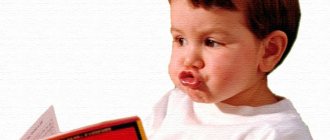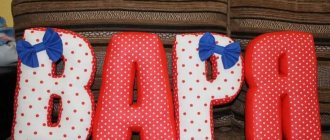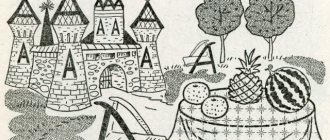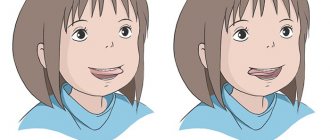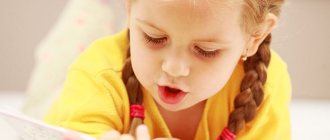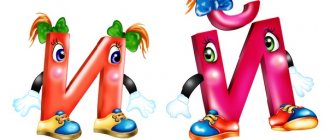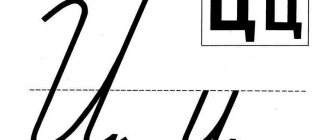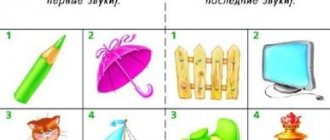Setting the sound Ch
The sound Ch can be made in several ways:
- Start by pronouncing the soft sound t. Pronounce it quickly. In this case, the tongue should touch the tips of the upper teeth, then the tongue is slightly curled, as if stroking the bases of the upper teeth. At the same time, the corners of the lips are stretched into a smile.
- Alternately name the sounds t and sh. Do it quickly. At the same time, the lips are stretched into a smile again.
- To find the hole between the teeth from the inside, you can use a piece of paper. First, the hole is felt with your hands, and then paper is applied there. To hold it, you need to apply force - this is an excellent warm-up for the tongue.
Correct articulation of the sound Ch
When articulating the sound H, the speech apparatus is in the following positions:
- The lips are rounded and moved forward slightly.
- The teeth don't connect.
- The tip of the tongue, without straining, connects with the upper teeth. There should be a small gap between the tongue and teeth.
- There is a flow of air in the middle of the tongue, which is clearly felt when you bring your palm to your mouth.
- The soft palate rises and presses against the back wall of the pharynx, while the passage into the nasal cavity closes, air passes through the mouth.
- The vocal folds do not tense, nor do they move apart.
LiveInternetLiveInternet
Target:
- Strengthen the skill of pronouncing the sound h
in syllables, words and phrases; strengthen the ability to form nouns with diminutive suffixes; - work on the development of sound-syllable analysis of the word “rook”;
- introduce the letter h; introduce the spelling of vowels a, u
after
h; - develop phonemic hearing, memory, attention and thinking.
Equipment:
- tree, Christmas tree, stumps, pictures, an envelope with riddles, a passport for the sound H and symbols of sounds; flowers with letters;
- a fairy tale about how the letter H quarreled with the letters Ya and Yu. (V. Volina), medals.
Progress of the lesson
I. Organizational moment.
Today, friends, we will go traveling through a fairy forest. But guess what we'll use to get there!
“Whoever is running, billowing vapors, blowing smoke from a chimney, carries himself forward. And me too” (train).
Children board the locomotive (sing a song).
Here we are seated, It’s fun to go visit us. We’re going, we’re going, it’s not a long way, Somewhere we can rest.”
II. Reinforcement of what has been learned about vowels and sounds.
- Let's relax in a forest clearing in this magical forest.
Look at the stumps there are pictures. Take them. The one who names the vowel sounds in the word that denotes the object in your picture will sit on the stump.
III. Getting to know new material.
1.What kind of envelope is this, let's see what's in there!
And in the envelope there are riddles, a passport, and symbols of sounds.
I wonder what this is for? Let's solve the riddles first.
What is it with Galochka? A thread on a stick. A stick in your hand, a thread in the river. (Fishing rod.)
Behind the glass door, someone's heart is beating, tick-tock, tick-tock. So quiet, so quiet . (Watch).
Fluffy cotton wool floats somewhere, The lower the cotton wool, the closer the rain. ( Cloud
)
– What sound do you think wants to meet us?
This is his first time with us, he urgently needs a passport. What symbol should we stick there for him?
Articulation
- Take the mirrors. Let's pronounce the sound [h'] again and observe the position of the tongue, lips, and teeth.
-Can I sing it?
– What are the names of sounds during the pronunciation of which air is retained?
- Let's make the sound [h']
– How to pronounce the new sound?
Conclusion: (Sound [h'] soft sound.)
- Now let’s put our hand on the neck and say the sound Ch again, what’s going on with our neck? (it is silent). (The sound [ch'] is dull.)
– Conclude: what you learned about the new sound. (Consonant, voiceless, always soft sound.)
What symbol will we stick on the passport (green circle).
2. Speech exercise:
Our new friend, the sound Ch, wants to play with you, repeat after me.
cha-cho-chu-chi
chi-chu-cha-cho
cho-chi-chu-cha
Cha-cha-cha - we saw a rook.
Chu-chu-chu
- I knock with a hammer.
Cho - -cho
– the sun warms hotly.
Chi-chi-chi
–
Pies baked in the oven are delicious.
3. Didactic game “Say kindly.”
We wanted some kind words. Which sound is ready to help us? [h] - he has a very soft sound, It seems that one cannot do without his services.
Look around and name the objects to me affectionately, so that the sound H is heard in the name (twig, needle, bird, cloud, stumps, Christmas tree, leaf, etc.).
4. Work on the development of sound-syllable analysis.
Find me a bird whose name has the sound Ch (Rook)
- How many syllables are in this word?
- How to find out how many syllables are in a word?
- Name the vowel sound.
- How many consonants are there in a word?
- What is the first, second, last (characteristics of sounds).
5. Physical education minute.
We've been sitting on the stumps for a while, let's go frolic in the forest clearing.
One, two, three, four, five - We all got up to play. Let's clap our hands, stomp our feet, and jump quickly to make it more fun. The wind is blowing strong, strong And the pine tree is swaying. Exercise helps us to always be healthy. And now we are like streams - Flowing one after another... Everyone stand up again - Let's play in the sun. We are cheerful rays, We are frisky and hot.
6. Introducing the letter h.
Guys, the sound Ch is indicated by the letter Ch. She hid somewhere in this forest. Let's try to find her. (Children find the letter H)
- Showing the letter h.
- Register in the air.
- Lay out the letter H from sticks.
- Game “Turn around once or twice and turn into the letter [h]”
7. The tale of how the letter H quarreled with the letters I and Yu. (V. Volina)
(
Annex 1
)
– The letter H has prepared a fairy tale for you.
One day the letters I, Yu, A and U invited the letter Ch to play hide and seek. They counted and it fell out to look for the letter Ch. The rest ran to hide. The letters are sitting in hidden places, waiting for someone to start looking for them. Now the letter Ch has already gone around everything, found A and U, but still can’t find I and Yu. I searched and searched, but couldn’t find it; offended, I decided to go home. The letter H passes by the neighboring house and sees Yu and I sitting on the porch as if nothing had happened. Ch was offended and since then their friendship has been apart. They never stand together.
But with the letters A and U, the letter H has become friends.
Since then, CHA and CHU are written only with A and U.
Give me words with these syllables.
8
.
And here is another clearing; letters live in this clearing. Read them. (Reading)
- Only one letter got lost. Which? (H)
Why?
- Let's introduce our lost letter to the letters living in this clearing. To do this, you need to read the merging syllables with this letter ( chi, cha, chu, cho
).
Let's now play with the flowers, words are written on the petals, with a syllable (CHA, CHU, CHO, CHI), read them (cloud, heap, clock, cup, flying, stocking, miracle, silent, whispering, cast iron, rays, candles, rolls, siskin, bug, shoulder, spider).
- Well done boys! That's how many new words you read with the letter C. How important and necessary the letter “C” is.
VI. Summing up the lesson.
- It's time to return home. Our amazing journey has ended. What sound did we meet today? Describe the sound.
The letter H gives you medals for “Young Readers”.
Articulation gymnastics
It is best to perform all exercises in front of a mirror so that the child can see how he performs them. Each exercise is performed at least three times.
- “Window.” Pull your lips forward as much as possible and give them a square shape. Make sure that the corners of your lips do not touch each other.
- “Pancake.” Smile as widely as possible. Place your tongue on your lower lip, relax and count to 10. The tongue should stretch across the entire width of the lip, but you don’t need to reach it out too far, just enough to cover the lip.
- "Painter". Stretch your lips in a smile, open your mouth slightly, and reach your upper palate with your tongue. Make smooth movements, as if using a brush, from the teeth to the throat.
- “Brushing our teeth.” Smile and make movements with your tongue that imitate brushing your teeth. Be sure to ensure that your tongue reaches the gums and does not run along the bottom edge of the teeth.
- "Cup". Stretch your lips in a smile, stick out your tongue and reach your nose. Remain in position for up to 10 seconds.
- “Delicious food.” Open your mouth and lick your upper lip with your tongue. Movements should be made from top to bottom, not from side to side.
- "Air football" Pull out your lips with a tube. Blow on the cotton wool, but your cheeks should not swell. Blow for 10-15 seconds.
Tongue exercises
Language exercises are divided into static and dynamic.
Static complex:
- "Spatula". Relax your tongue and place it on your lower lip. Stay in this position for 10 seconds (the edge of the tongue should touch the corners of the lips).
- “The point of a needle.” Remove the tongue from the mouth, straighten and tense - the tongue at this time should be even and narrow.
- “Angry cat.” Place the tip of your tongue against your lower teeth and touch the middle of your tongue to your upper palate. Stay in the position for half a minute.
Dynamic complex:
- “Punishment for the tongue.” Stick out your tongue and place it on your lower lip. Press your tongue with your lips and say five-five-five.
- “Watch.” Stick out your tongue and stretch it to one ear, then to the other. Keep the entire speech apparatus in tension.
- “Swing”. Stick out your tongue and pull it alternately towards your nose and chin.
- "Horse". Click your tongue, imitating the blows of a horseshoe. The middle of the tongue is always pressed to the palate.
- "Little Turkeys" Run your tongue back and forth across your upper lip so that you make the sound bl-bl. The speed of movement gradually increases.

